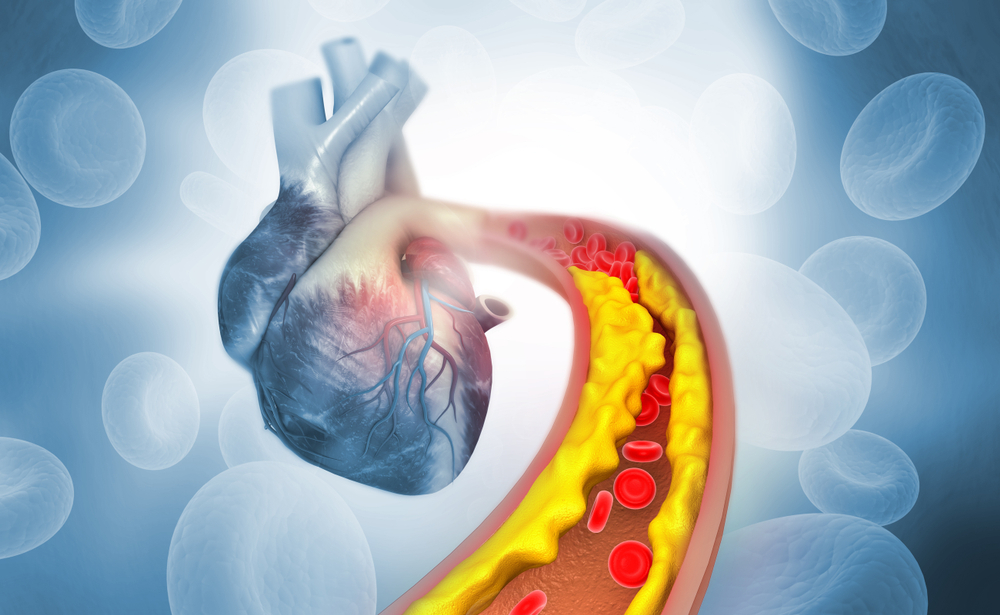High cholesterol occurs when the body has an excess of a fatty substance called cholesterol in the blood. Based on worldwide trends, international data across 40 years show that elevated cholesterol levels have shifted from high-income Western countries towards the East and Southeast Asia. High cholesterol is also medically known as hypercholesterolemia. Keep reading to find out all about high cholesterol and how it may affect you.
What is Cholesterol?
Cholesterol is a waxy substance produced by the liver and is a component of all the cells found in the body. Cholesterol is required for various body functions to occur, including the synthesis of cell membranes, certain hormones, and the production of substances required for fat digestion.
What Causes Hypercholesterolemia?
Hypercholesterolemia is the medical term for high cholesterol. Excess cholesterol present in the blood forms fatty deposits in the walls of the coronary arteries (i.e. blood vessels that supply the heart with blood). As cholesterol accumulates, it causes atherosclerotic plaques to form, narrowing and hardening the artery walls, otherwise known as atherosclerosis. Eventually, these plaques can block the arteries, limiting the amount of oxygen-rich blood which can reach the heart. This in turn increases the risk of angina and heart attacks. If the carotid artery – the artery that supplies blood flow to the brain-narrows and hardens, the risk of stroke increases.
All the cholesterol our bodies need is produced in the liver, but an alternative source is dietary cholesterol which comes from animal food products such as meat, poultry, dairy, egg yolk and fish. These foods are rich in saturated fats and trans fats which can trigger the liver to produce excess cholesterol. High cholesterol is usually the result of a diet high in saturated fats and low levels of physical activity.
Hypercholesterolemia can also be inherited wherein excess cholesterol accumulates in other bodily tissues such as the under skin of the eyelids or the tendons. The most common inheritable condition is called familial hypercholesterolemia. Familial high cholesterol affects about 1 in 200 to 250 people around the world.
Symptoms of Hypercholesterolemia
High cholesterol can be detected by a blood test in the absence of symptoms as high cholesterol by itself doesn’t cause symptoms. However, when cholesterol causes the arteries to narrow, then symptoms of heart disease will be displayed, such as chest pain, shortness of breath, and fatigue.
Types of Cholesterol
There are 3 main types of cholesterol:
- Low-density lipoprotein (LDL) – this carries cholesterol to the cells which need it. Excess amounts of LDL causes cholesterol to build up in the artery walls and this is known as “bad cholesterol”.
- High-density lipoprotein (HDL) – this absorbs bad cholesterol, HDL carries it to the liver and subsequently removes it from circulation, it is also known as “good cholesterol”.
- Very low density lipoprotein (VLDL) – the liver makes vLDL and releases it into the bloodstream. VLDL particles mainly carry triglycerides, a specific type of fat, to the tissues, it is also known as “bad cholesterol” because it contributes to the buildup of plaque in the arteries.
Higher HDL numbers are better as they lower the risk of coronary artery disease and stroke. Ideal HDL levels are as follows:
| Age group Group | Healthy HDL Levels |
| 19 or younger | More than 45mg/dl |
| Men aged 20 or older | More than 40mg/dl |
| Women aged 20 or older | More than 50mg/dl |
Lower LDL numbers are better as a high LDL levels can increase your risk for coronary artery disease and related problems.
| LDL Cholesterol Level | LDL Cholesterol Category |
| Less than 100mg/dL | Optimal |
| 100-120mg/dL | Near optimal/above optimal |
| 130-150 mg/dL | Borderline high |
| 160-189 mg/dL | High |
| 190 mg/dL and above | Very High |
While there isn’t a way to directly measure vLDL levels, you will most likely get a blood test to measure triglyceride levels. The lab will use the triglyceride levels to estimate what the vLDL level is. Normal vLDL levels should be about one-fifth of triglyceride levels.













